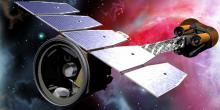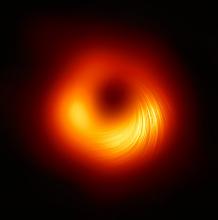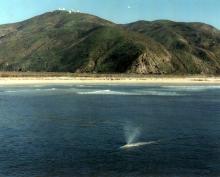Listen to today's episode of StarDate on the web the same day it airs in high-quality streaming audio without any extra ads or announcements. Choose a $8 one-month pass, or listen every day for a year for just $30.
You are here
Moon and Mercury
Tornadoes twist around the planet Mercury. They help give it an extremely thin atmosphere — a few traces of hydrogen, oxygen, and other elements.
Mercury is the Sun’s smallest and closest planet. It’s about half again the size of the Moon. And it orbits the Sun at an average distance of about 36 million miles.
Mercury is a dense ball of rock and metal. As it spins on its axis, it generates a magnetic field. The field is only about one percent as strong as Earth’s. But it can interact with the Sun’s magnetic field. Part of that interaction creates twisting columns of magnetic force that resemble tornadoes. They’re up to 500 miles wide.
The magnetic field is stripped away from the inside of a funnel. That allows particles of the solar wind to slam into Mercury. And that can blast atoms from the surface high into the sky — contributing to the planet’s atmosphere. Particles of the solar wind also contribute to the atmosphere, as do particles from passing comets and other sources.
Nothing stays there for long, though. Mercury’s gravity is weak, so particles are easily stripped away. But new ones take their place — maintaining Mercury’s barely-there atmosphere.
Mercury is low in the east-southeast in the dawn twilight now. It looks like a fairly bright star, but it’s so low in the sky that it can be hard to pick out. It’ll be easier tomorrow, though, because the planet will perch close below the crescent Moon.
Script by Damond Benningfield





